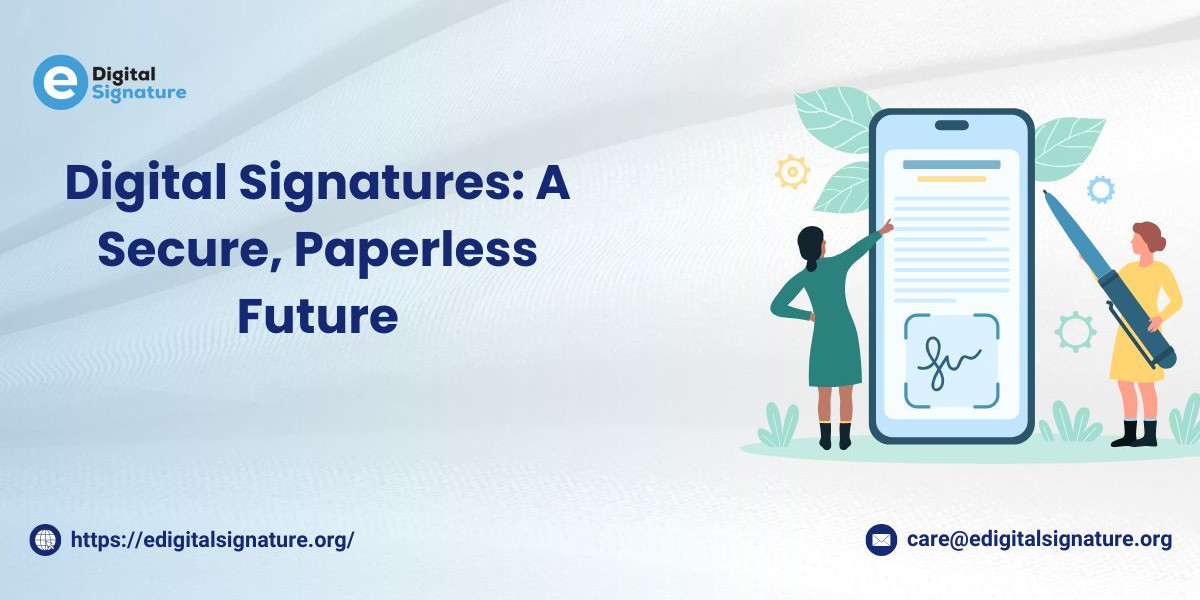Introduction
In an increasingly digital world, the way we sign contracts, approve documents and finalize agreements is evolving. Gone are the days of printing, scanning, and mailing paper forms. Today, businesses and individuals are embracing a paperless, more secure alternative: digital signatures. These electronic signatures, powered by advanced cryptographic technology, offer unparalleled security, convenience, and efficiency. As industries worldwide continue to digitize their operations, digital signatures are becoming an essential part of doing business. They’re transforming how agreements are created, verified, and stored—saving time, reducing costs, and enhancing trust in the process. In this blog, we’ll explore why digital signature are not just a trend but the future of agreements.
Convenience and Efficiency in a Paperless World
One of the most obvious benefits of digital signatures is the convenience they provide. With traditional methods, signing a document often involves printing it out, manually signing it, scanning it back in, and emailing or mailing it. This process is time-consuming, wasteful, and cumbersome. Digital signatures eliminate these steps. Instead, a document can be signed electronically in a matter of seconds, from any device and any location. This convenience is particularly valuable for businesses with distributed teams, international clients, or a high volume of contracts to manage. With digital signatures, there’s no need to wait for documents to arrive by post or spend time scanning physical copies. Everything is handled online, seamlessly integrating into paperless workflows and speeding up approval cycles.
Enhanced Security and Fraud Prevention
Paper-based signatures have long been vulnerable to forgery, tampering, and misplacement. Even with the best intentions, verifying the authenticity of a handwritten signature can be challenging. Digital signatures, on the other hand, leverage advanced cryptographic techniques to provide a much higher level of security. A digital signature creates a unique “fingerprint” of the document that is tied to the signer’s identity. Any alteration to the document after it’s signed invalidates the signature, making it immediately clear that tampering has occurred. This ensures that the content remains intact and unaltered, protecting the integrity of the agreement. In addition to protecting the document itself, digital signatures also provide strong authentication. Signers must verify their identity—often through digital certificates issued by trusted authorities—ensuring that only authorized individuals can sign the document. This level of verification reduces the risk of fraud and helps maintain trust in the agreement’s legitimacy.
Cost Savings and Environmental Benefits
Going paperless isn’t just a matter of convenience—it’s also a cost-effective and environmentally friendly choice. Printing, shipping, and storing physical documents all come with expenses that can add up quickly, especially for businesses handling large volumes of agreements. Digital signatures eliminate these costs. Furthermore, reducing paper usage has a positive impact on the environment. By switching to digital signatures, organizations can minimize their carbon footprint, conserve natural resources, and support sustainability initiatives. These environmental benefits resonate with eco-conscious clients, employees, and stakeholders, helping to build a reputation as a forward-thinking and responsible organization.
Seamless Integration with Modern Workflows
Digital signatures are not a standalone tool; they are a natural extension of today’s digital workflows. Many businesses use cloud-based document management systems, project management platforms, and collaboration tools to streamline operations. Digital signature solutions integrate seamlessly into these environments, making it easy to send, sign, and store documents within existing workflows. For instance, digital signatures can be added to contracts managed in customer relationship management (CRM) platforms, vendor agreements stored in cloud-based file systems, or internal HR documents shared through team collaboration tools. This integration reduces friction, simplifies processes, and allows teams to stay productive without switching between multiple systems.
Legal Compliance and Global Acceptance
Another reason digital signatures are becoming the standard for agreements is their widespread legal acceptance. In many jurisdictions, digital signatures are recognized as legally binding and equivalent to handwritten signatures. Regulations such as the eIDAS (Electronic Identification, Authentication, and Trust Services) regulation in the European Union, and the ESIGN Act (Electronic Signatures in Global and National Commerce Act) in the United States, have established clear frameworks for the use of electronic signatures. By complying with these regulations, digital signatures provide businesses with a reliable, enforceable way to sign and manage contracts across borders. This global acceptance is crucial for companies operating in multiple countries, as it allows them to maintain consistent processes and avoid legal complications.
Supporting Remote Work and Digital Transformation
The rise of remote work and digital transformation has accelerated the adoption of digital signatures. As more teams operate from different locations, traditional methods of signing documents have become increasingly impractical. Digital signatures offer a secure, efficient way to finalize agreements without the need for physical proximity. Moreover, digital transformation initiatives often focus on improving efficiency, reducing costs, and leveraging technology to create better customer experiences. Digital signatures align perfectly with these goals. They enable businesses to handle more agreements, faster, and with greater accuracy—an essential capability in a fast-paced, competitive environment.
Building Trust in a Digital Ecosystem
In a world where trust is paramount, digital signatures ensure that both parties need to feel confident about the agreement. The cryptographic underpinning of digital signatures ensures that the document is authentic, the signer’s identity is verified, and the content has not been altered. This trust extends beyond the signing parties to regulators, auditors, and other stakeholders who may need to review the agreement in the future.
Suggested read - Know about full detail What is E-Mudra
Conclusion
Digital signatures are more than a technological convenience—they are a transformative tool that meets the needs of a digital-first world. By enabling secure, paperless agreements, digital signatures enhance efficiency, reduce costs, strengthen trust, and support global compliance. As organizations continue to embrace remote work, digital transformation, and environmentally friendly practices, digital signatures are poised to become the standard for finalizing agreements. For businesses and individuals looking to stay ahead in the digital age, investing in digital signature solutions is a smart move toward a more secure, sustainable, and efficient future.








